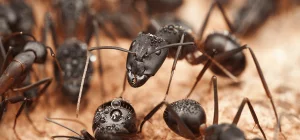
You can’t live in or visit South Florida without being impressed by the beauty of our signature palm trees. These graceful, towering wonders of nature are major contributors to our world-renowned atmosphere. A key to the success of South Florida’s palm trees is their resilience—they can withstand hurricane-force winds and benefit in other ways from their unique system of dense, short roots that grip the soil.
In addition, some of Florida’s native palm trees, such as the Needle palm, survive our occasional cold spells and are naturally resistant to bugs and diseases. Unfortunately, new threats to the health and beauty of our palm trees arrive on a regular basis.
One of the most devastating pests to endanger Florida palm trees is Haplaxius Crudus, or American palm cixiid, an insect that migrated from Jamaica in 2019. In just a few short years, the insect has infected 19 different species of Florida palm trees with lethal bronzing disease and lethal yellowing disease. It is much cheaper to keep your palms healthy. On the low end, replacing a small Saw Palmetto can cost $100 on average. On the other end of the spectrum, replacing a Royal Palm can be upwards of $2500.
When you see bugs on palm trees, you need to act fast. These are the most common palm tree pests, and Nozzle Nolen has treatment options for businesses and residents to keep palms healthy.
Diseases Spread by Bugs on Palm Trees
Healthy palm trees naturally resist most bug-borne diseases, but damage caused by being transported, by cold weather, or some other source makes the trees more susceptible to infection. A list of the bugs on palm trees that have the most potential of spreading disease include:
- Coconut Mites
- Mealybugs
- Palm Aphids
- Palm Leaf Scales
- Palm Leaf Skeletonizer
- Palmetto Weevil
- Royal Palm Bug
- Saddleback Caterpillar
- Spider Mites
We will discuss each one, and the damage it can do to your palms.
Coconut Mites
These tiny members of the spider family eat the husks of coconut fruits, and while the damage they cause to the fruit is mostly cosmetic, they can lead to the fruit dropping prematurely. The mites are so small that they’re difficult to detect. They’re also impervious to most chemical treatments, so the best remediation is to remove all of the tree’s coconuts.
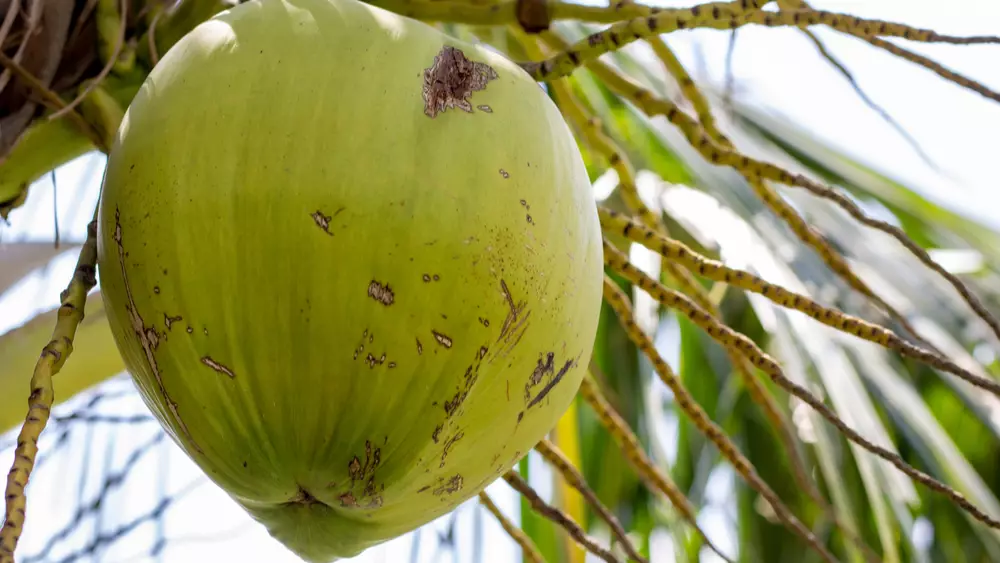
Mealybugs
Members of the Pseudococcidae family, mealybugs are unarmored scale insects that thrive in Florida’s warm, moist climate. The females eat sap from the palm’s buds or roots (the males live long enough only to fertilize the females’ eggs). A small number of mealybugs won’t damage a palm tree, but they reproduce quickly, and large colonies can kill a tree. Proper spraying with an insecticide is the best solution for a large mealybug infestation.
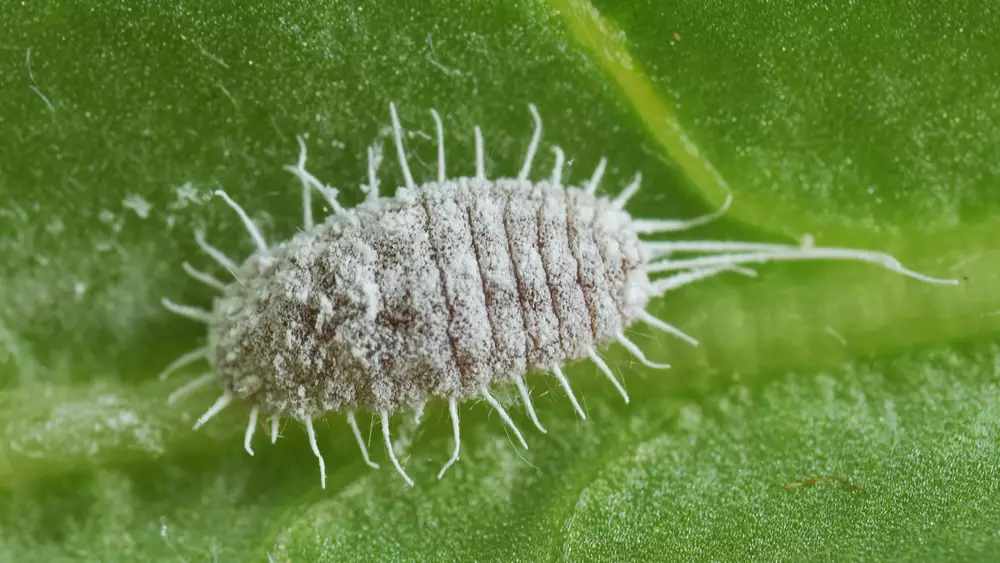
Palm Aphid
These sucking insects typically go after the palm tree’s new growth and young fruit. They have a dark brown body ringed in wax, and once they’ve found a home, they can live off the tree’s sap for a long time. Palm Aphids are commonly found on Coconut Palms, Chinese Fan Palms, Date Palms, Washington Palms, and Alexander Palms. Removing the pests requires the application of insecticide directly onto the bugs.
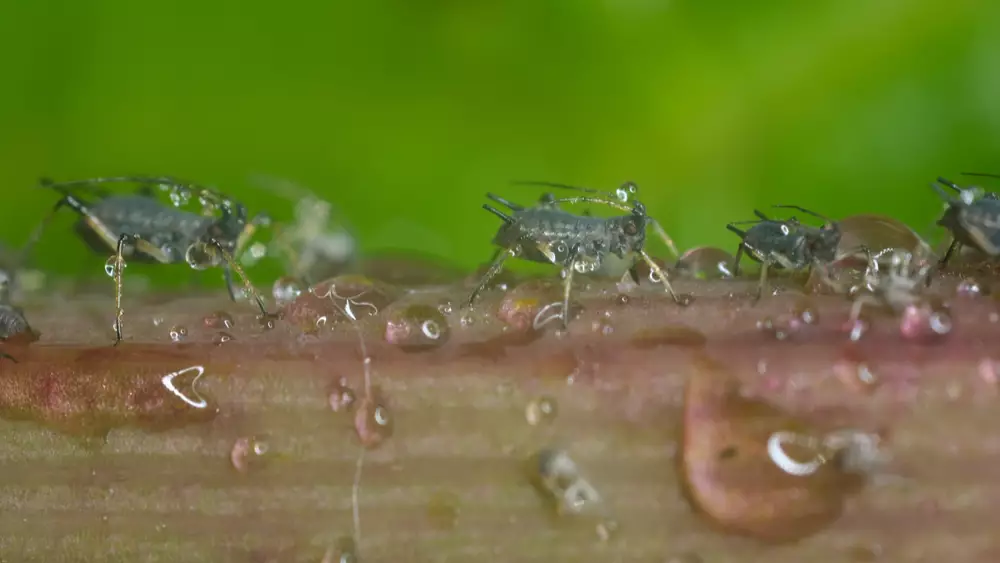
Palm Leaf Scales
Florida red scales, Thread scales, Magnolia white scales, and Soft brown scales are headless, legless, female insects that typically attach themselves to a palm’s new fronds and use a straw-like appendage to suck fluid out of the tree. As they multiply, the bugs can devastate a tree, and getting rid of them can be challenging. Careful application of an insecticide soap is the best approach to removing these pests.
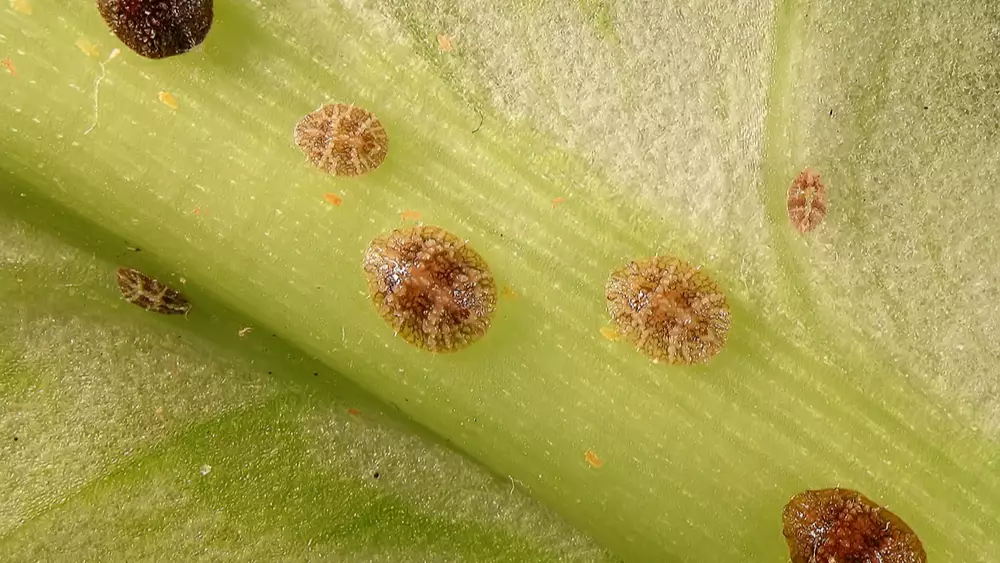
Palm Leaf Skeletonizer
These tiny caterpillars feed on the area of palm fronds between the veins or ribs, leaving behind a dark tube structure that resembles a skeleton. If only a few of these bugs are present, they can be removed using a high-pressure hose. However, once the caterpillars have spread across the tree, the damaged fronds must be removed, and the rest washed and sprayed with an appropriate insecticide.
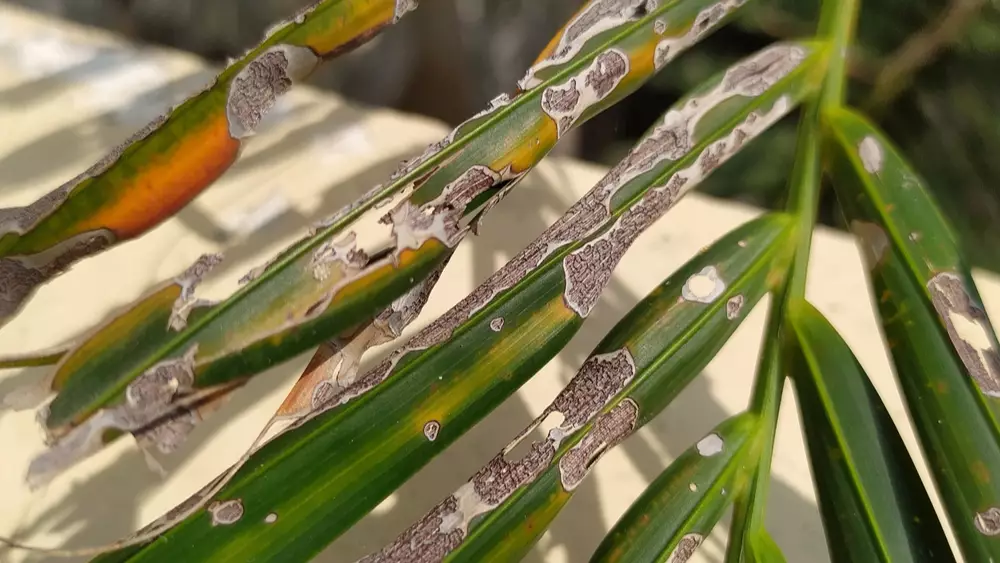
Palmetto Weevil
The trees most likely to be attacked by these large beetles are ones that have been badly damaged or that were recently transplanted, especially Cabbage Palms and Canary Island Date Palms. Adults lay their eggs in leaf bases, and once the eggs hatch, the larvae begin to eat, eventually tunneling into the heart of the palm. There they build cocoons from which the adults hatch. In most cases, the bugs have seriously damaged the tree before their presence is detected.
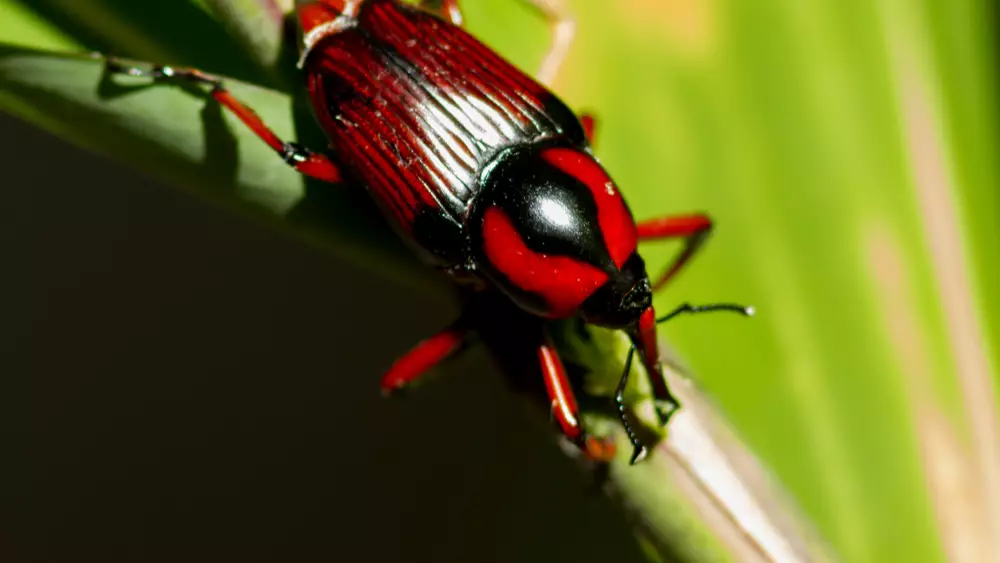
Royal Palm Bug
This small, yellow-green bug infects Royal Palm Trees, feeding primarily on young palm fronds. Females lay their eggs between the folds of emerging leaves, and eight or nine days later, the eggs hatch, leaving the frond looking burnt or brown and preventing the leaf from maturing. Removing the bugs requires the application of an insecticide spray.
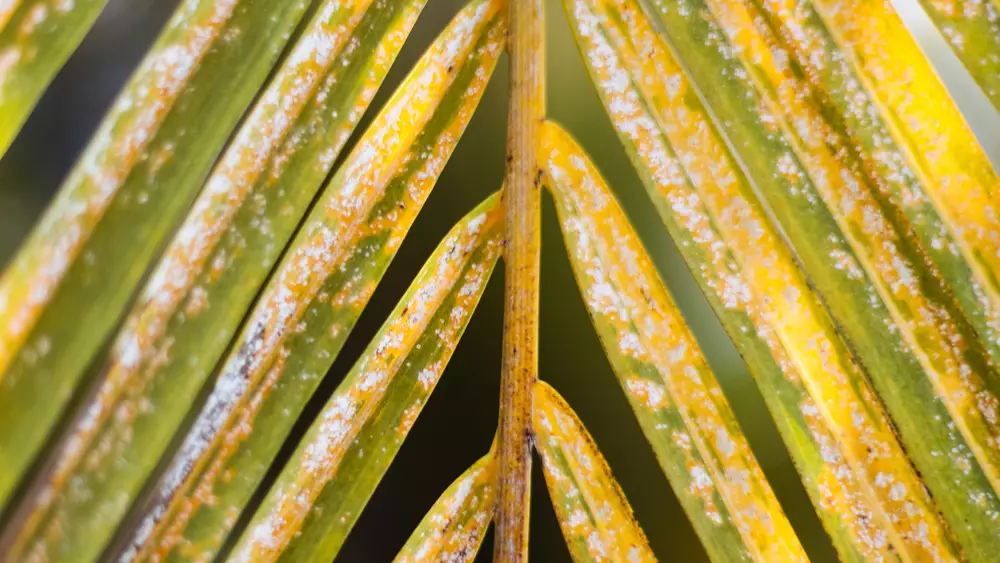
Saddleback Caterpillar
These insects feed on the underside of palm leaves, creating large holes in their surface. Their preferred targets include Coconut, Canary Island, Pygmy Date, Princess, and Mexican Fan Palms. The dark-brown bugs get their name from the distinctive green markings on their backs that look like a saddle. The caterpillar’s poisonous spines can cause a stinging sensation when you touch them. They also require an insecticide application to eradicate.
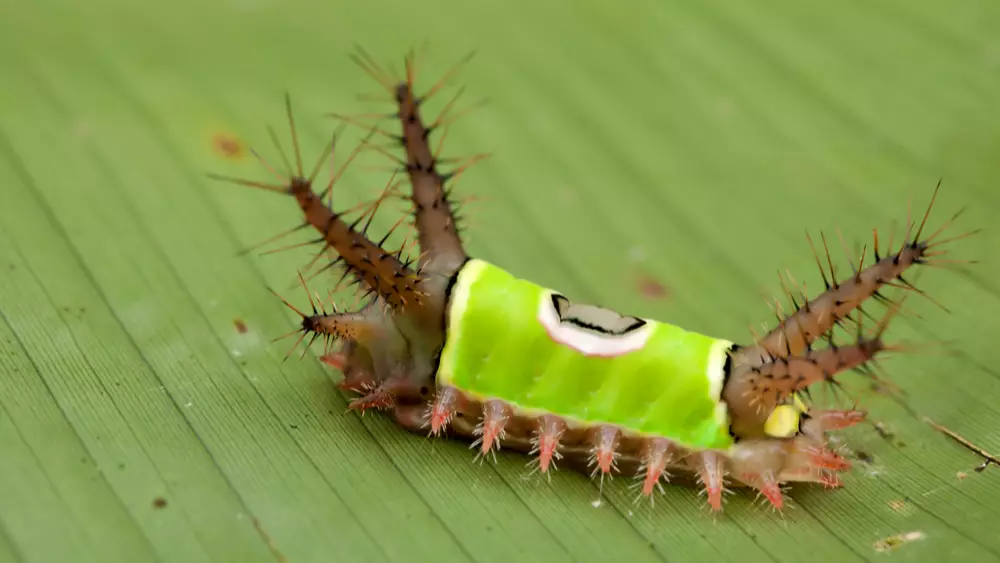
Spider Mites
They’re not insects, but these mites, especially the two-spotted mite, often attack palm trees as well as indoor plants. They cause yellow spots or stippling on palm leaves and can cause fronds to appear washed out. The mites look like tiny white dots on the leaves, but they’re so small you may need a magnifying glass to spot them. Getting rid of the mites requires the use of an insecticide or miticide.
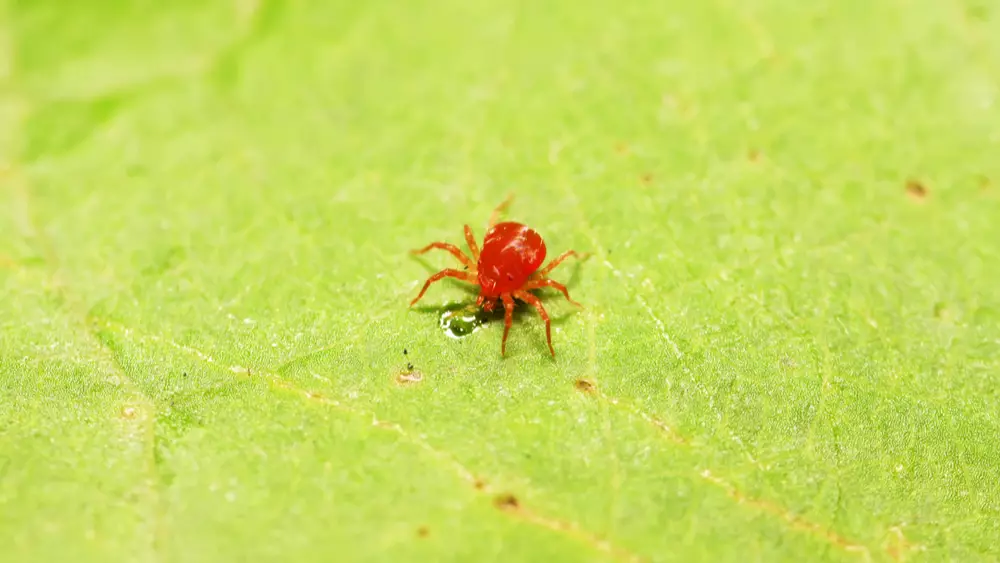
Combating Bugs on Palm Trees With Nozzle Nolen
Diagnosing and treating a sickly-looking palm tree is much more difficult and expensive than keeping the trees healthy by following a preventive maintenance regimen. The trained and certified pest-control pros at Nozzle Nolen will work with you to create a custom maintenance plan for the palm trees at your home or business to ensure they continue to beautify our environment for many years to come.
Nozzle Nolen has helped residents and business owners in South Florida keep their palms healthy and beautiful for more than 70 years. We hope this guide to the potential damage that bugs on palm trees can cause has motivated you to get ahead of any diseases that could damage your palms. Call us at 800.226.6536 or Contact Us for more information on our Palm tree program.
